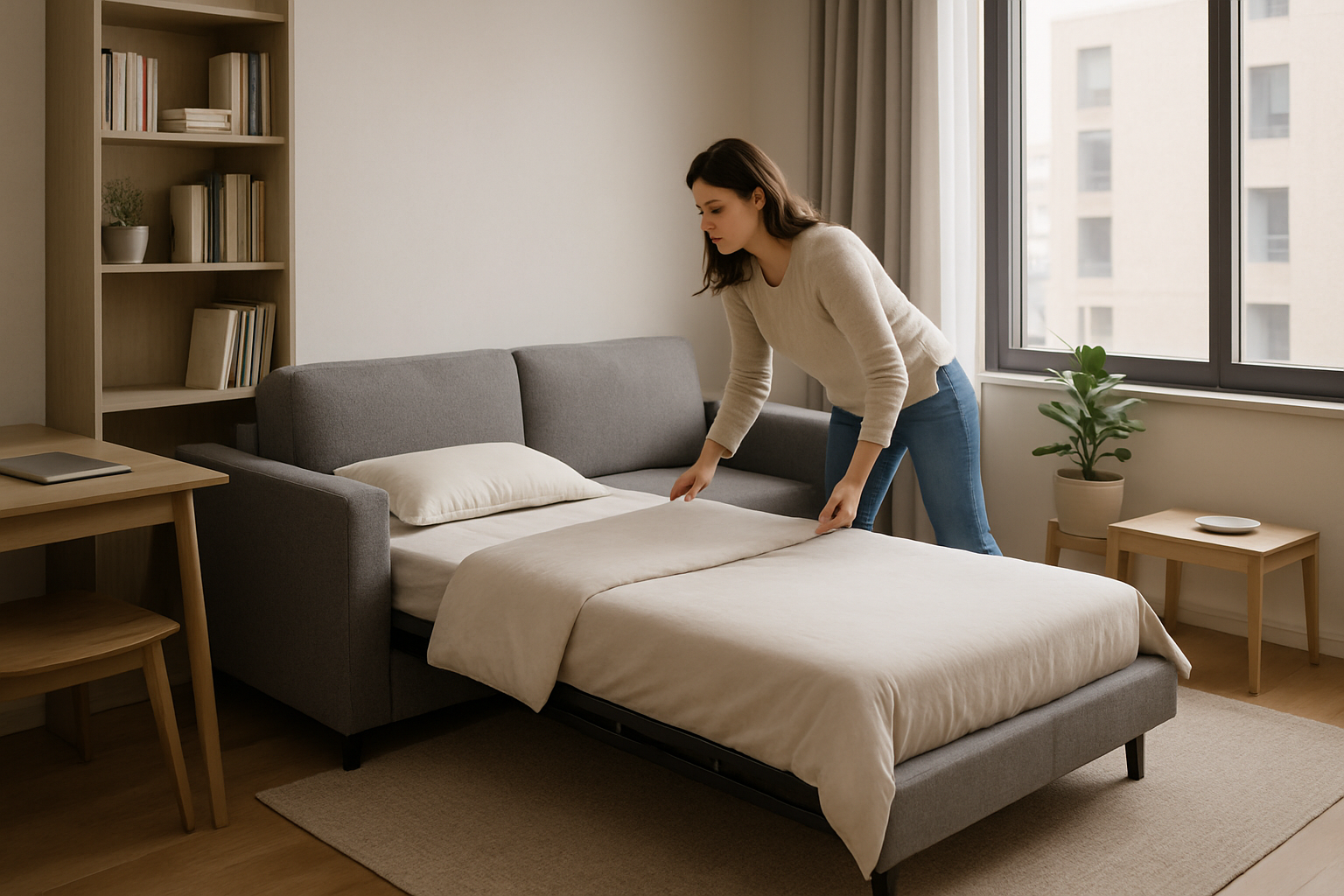The Sofa Bed Buyer’s Guide: Mechanisms, Comfort, and Payment Plans
Sofa beds provide the versatility of both comfortable seating and a convenient sleeping solution for guests, making them ideal for apartments, studios, and homes with limited space. Understanding the different mechanisms, comfort features, and payment options can help you make an informed decision when purchasing a sofa bed. This comprehensive guide explores the essential aspects to consider, from the various operating systems and mattress types to sizing considerations, durability factors, and financing options available in today's market.

Mechanisms and Setup: Finding the Right Operating System
Sofa beds come in several different mechanisms, each with distinct advantages. Pull-out mechanisms feature a metal frame that unfolds from beneath the seat cushions, revealing a mattress. These traditional designs provide a sleeping surface similar to a regular bed but require sufficient space in front of the sofa for extension. Click-clack mechanisms (also called clic-clac) allow the back of the sofa to recline flat, creating a sleeping surface without additional parts to pull out. The name comes from the clicking sound made when adjusting positions. Futon mechanisms fold the entire sofa flat, typically with a thicker cushion that serves as both seat and mattress.
When evaluating mechanisms, stability and setup speed are important considerations. Pull-out mechanisms generally offer better stability but take longer to set up and require more clearance space. Click-clack designs provide quick transformation but may have a center seam that affects comfort. Futons offer simplicity in operation but may not provide the same support level as other options. Consider how frequently the bed will be used and who will be operating the mechanism when making your selection.
Comfort and Mattresses: Balancing Seating and Sleeping Functions
The comfort of a sofa bed depends largely on its mattress type. Foam mattresses are lightweight, affordable, and conform to the body, making them popular in many sofa beds. Innerspring mattresses contain coil systems that provide better air circulation and bounce, though they can be heavier and more difficult to fold. Hybrid mattresses combine foam and coil technologies, offering balanced comfort but at a higher price point.
The dual-purpose nature of sofa beds creates inherent design compromises. A sofa bed that excels as seating might have a thinner mattress, while one optimized for sleeping comfort might feel deeper or firmer when used as seating. Many manufacturers now address this balance with innovations like memory foam toppers, reinforced edge support, and zoned comfort systems. When testing a sofa bed, spend time both sitting and lying down to evaluate its performance in both modes, as the quality of each function significantly impacts user satisfaction.
Size, Access, and Storage: Practical Considerations
Sofa bed footprints vary considerably, from compact loveseats that extend to twin-size beds to sectionals that open into queen or king sleeping surfaces. When measuring for a sofa bed, account for three critical dimensions: the sofa’s footprint when closed, the extended bed’s footprint when open, and the clearance needed for operation. Most pull-out models require 2-3 feet of clearance in front, while click-clack designs typically need space behind.
Doorway access presents another practical challenge. Before purchasing, measure all doorways, hallways, and stairwells the sofa bed must pass through during delivery. Many manufacturers provide specific clearance requirements or offer models with removable components to facilitate delivery. Additionally, some sofa beds include integrated storage compartments for bedding, pillows, and other essentials, maximizing functionality in small living spaces. These storage features can significantly enhance convenience, especially in studio apartments or guest rooms.
Build and Care: Ensuring Durability and Longevity
The durability of a sofa bed depends largely on its construction. Frame materials range from engineered wood to hardwood and metal combinations, with kiln-dried hardwood frames typically offering superior longevity. Hinges and mechanisms represent potential failure points, so look for models with reinforced connection points and smooth-operating hardware. Weight limits vary by model, with most accommodating between 250-600 pounds when in bed form.
Maintenance considerations should factor into your decision as well. Removable, washable covers simplify cleaning and extend the furniture’s lifespan. Some manufacturers offer stain-resistant fabric treatments or leather options that wipe clean. For models without removable covers, look for stain-resistant fabrics or consider aftermarket slipcovers. Regular lubrication of moving parts and proper opening technique (lifting from the designated handle rather than the mattress) can prevent premature mechanism wear and ensure years of reliable operation.
Payment Options Compared: Financing Your Sofa Bed Purchase
Sofa beds represent a significant investment, with prices ranging from $400 for basic models to $3,000+ for premium designs. Various payment options can make this purchase more accessible.
| Payment Option | Key Features | Typical Rates and Fees |
|---|---|---|
| No-Deposit Financing | Purchase with $0 down payment | 0-30% APR depending on credit score |
| No-Credit-Check Financing | Approval based on income verification rather than credit score | 30-60% APR, often with processing fees |
| Buy Now, Pay Later (BNPL) | Split purchase into installments (Affirm, Klarna, Afterpay) | 0% for short terms, 10-30% APR for longer terms |
| Store Credit Cards | Often with introductory 0% periods | 15-29% APR after promotional period |
| Rent-to-Own | Weekly/monthly payments with ownership option | Effective APR often exceeds 100% over full term |
Prices, rates, or cost estimates mentioned in this article are based on the latest available information but may change over time. Independent research is advised before making financial decisions.
No-deposit financing typically requires good credit but eliminates upfront costs. No-credit-check options provide accessibility but at significantly higher interest rates. BNPL services offer flexibility with potentially lower fees for short repayment periods. When comparing payment options, consider the total cost including interest and fees rather than focusing solely on monthly payment amounts. Many furniture retailers offer their own financing programs with promotional rates, though these may convert to high-interest arrangements if not paid within promotional periods.
Balancing Priorities for Your Perfect Sofa Bed
Selecting the ideal sofa bed involves balancing mechanism type, comfort features, space considerations, durability factors, and payment options. Consider how frequently the bed will be used, who will be using it, and how it fits within your living space. Testing both the sitting and sleeping functions in person whenever possible provides the best assessment of comfort and usability. By understanding the trade-offs between different sofa bed designs and carefully evaluating your specific needs, you can select a versatile piece that enhances your living space while providing comfortable accommodations for overnight guests.




